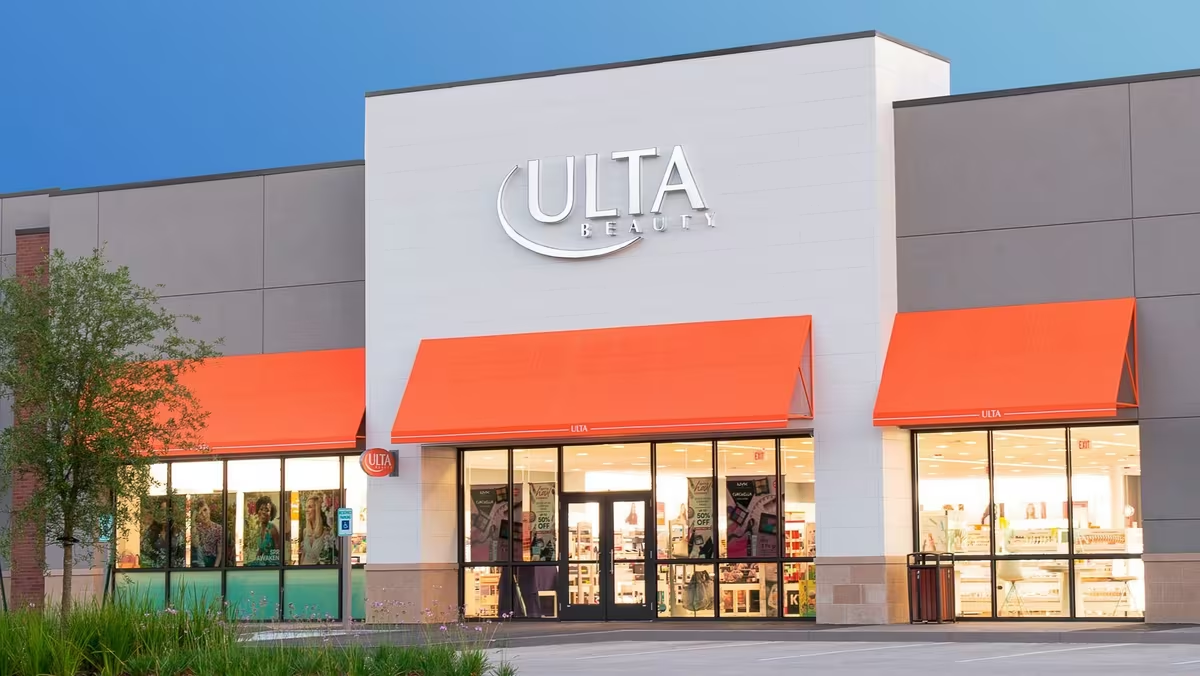This week, a look at Pandora’s transformation under a new CEO. Also, a buyer’s take on Paris Fashion Week, executive moves at Monica Vinader and Vestiaire Collective, news to know, and the Glossy podcast covers Paris Fashion Week. For tips or comments, email me at zofia@glossy.co.
Pandora’s U.S. business has doubled since 2020, and under Luciano Rodembusch, president of Pandora North America, it continues to be a regional growth leader for he company, posting 8% like-for-like sales in the second quarter. At the same time, Pandora is preparing for a leadership transition: CMO Berta de Pablos-Barbier will succeed CEO Alexander Lacik in March 2026.
De Pablos-Barbier joined Pandora in late 2024 after senior roles at Moët & Chandon, Lacoste, Boucheron and Coty, where she led global marketing and brand repositioning. Her appointment marks a brand shift toward design elevation, cultural storytelling and premium retail experiences, according to the brand. Industry experts on background said that they see her appointment as a signal that Pandora intends to lean further into luxury values while maintaining accessibility, combining her experience in European heritage branding with Pandora’s mass reach. In a statement, De Pabos-Barbier called Pandora an “accessible jewellery company” with “significant untapped potential.”
On the company’s second-quarter earnings call on August 15, Lacik said the group’s Phoenix growth strategy, launched in 2021, remains its “North Star” as it works to transform Pandora “into a full jewelry brand,” as opposed to just a charm brand. He added, “The opportunity ahead of us is significant across all product categories.” Pandora sells charms, bracelets, rings, necklaces and earrings across both silver and gold collections. Pandora delivered 8% organic growth and an EBIT margin of around 24% for the quarter, even as global tariffs and foreign exchange volatility challenged margins.
The U.S. continues to be Pandora’s strongest market. “The U.S. consumer has rediscovered Pandora in the last few years,” Rodembusch told Glossy. “They now see us as an affordable jewelry brand with fashion credibility. Our job is to keep that momentum going by being closer to what’s relevant locally, while keeping our global identity.”
Earlier this year, the company opened a flagship in Times Square, designed to immerse customers in its updated brand world. The Times Square flagship features digital screens showcasing styling inspiration, interactive engraving stations and mobile-enabled checkout through associate tablets, creating a seamless link between the brand’s in-store and online experiences. Pandora described the pop-up’s performance as strong but did not share conversion data.
Pandora’s recent product launches reflect its new positioning. The Talisman collection, inspired by Roman coins, and the new Minis charm range bring refined design to entry-level price points. The Talisman charms start at $45 and the Minis at $38. “Every collection starts with a story,” said Rodembusch. “When you build your bracelet, you’re not just adding charms, you’re telling people a little bit about your life. With Talisman and Minis, we wanted to open that story to more people, with pieces that feel collectible and personal.”
The new collections build on the success of Pandora’s longstanding charm icons, including the Cherry Blossom Dangle, the Symbols of New York City Dangle and the Splittable Sun & Moon. These pieces helped define Pandora’s storytelling approach to jewelry, where each charm represents a personal moment. The Murano Glass Sea Turtle charm, introduced in 2020, sold more than 300,000 units in its first six months and still ranks among the brand’s top four products by sales value. The Talisman and Minis collections continue that legacy, introducing a more refined design language while keeping the idea of self-expression at their core.
“We’ve doubled our U.S. business in four years, but we’re still early in our journey,” Rodembusch said. “The next step is to make Pandora as aspirational as it is accessible.” That vision has been central to Pandora’s Phoenix strategy since 2021 and is expected to deepen under incoming CEO Berta de Pablos-Barbier, who brings a luxury-branding background from Moët & Chandon and Boucheron.
Pandora’s creative and marketing focus has evolved in step with its product shift. “When people like Pamela Anderson or Tyla wear Pandora, it tells the world that we can live in that fashion space, too,” said Rodembusch, referencing the brand’s recent ambassadors. Anderson became a Pandora ambassador in August 2023 as part of the brand’s lab-grown diamond launch campaign, “Pandora Lab-Grown Diamonds: Diamonds for All.” Tyla joined as a brand ambassador in February 2024, fronting the Pandora Talisman campaign. She was featured heavily in the brand’s fashion-week activations and its digital storytelling around the new collection in early 2025.
“They’re not just models for us, they’re storytellers,” said Rodembusch. Both Anderson and Tyla will remain as brand ambassadors through the 2025 holiday season.
Launched in January 2024, Pandora’s Be Love campaign — featuring Chloe and Halle Bailey alongside Pamela Anderson and Rosario Dawson — captured the brand’s message of celebrating love in all its forms. Within the first two days, it generated $2.35 million in media impact value, driven largely by TikToker Sydney Renay Everhart — her video about bringing Pandora bracelets “back” reignited nostalgia and sparked a wave of users posting their own pieces. The campaign demonstrated how influencer storytelling can reframe a legacy brand for a new generation.
Technology is also reshaping Pandora’s stores. “What’s happening in-store is completely connected to our digital world,” said Rodembusch. “If a customer walks in, our associates can instantly see their wish list, loyalty history and even what they last browsed online, using geotagged data. That connection is what keeps people coming back.”
Store associates use tablets to monitor My Pandora loyalty profiles and send personalized follow-up messages to customers, while engraving stations with digital screens allow customers to preview custom designs before making a purchase. Services such as Buy-Online, Pick-Up In-Store and Endless Aisle — allowing customers to buy items not immediately available in-store — now account for a growing share of transactions, according to Rodembusch.
In addition, Pandora said its revamped e-commerce platform, rolled out across all markets this year, has already produced a low single-digit increase in average revenue per consumer.
As De Pablos-Barbier prepares to take over, the company’s creative and commercial priorities appear increasingly aligned.
For Rodembusch, that direction is already taking shape in North America. “The U.S. has been a proving ground for how far Pandora can go,” he said. “It’s about creating jewelry people connect with and stories they want to share. That’s what will define us in the next phase.”
Inside the buy: What Harrods is betting on from Paris Fashion Week
“Paris offered a Fashion Week unlike any other,” said Simon Longland, director of fashion buying at Harrods, reflecting on the Spring 2026 shows. “There was a renewed sense of creativity and purpose throughout the week,” he added, pointing to the accessories category as “invigorated and ready to capture the imagination of clients globally.”
Longland highlighted Tom Ford, Alaïa, Schiaparelli, Balenciaga, The Row, Céline, Givenchy, Chanel and Dior as standout shows, while calling Matthieu Blazy’s debut for Chanel “outstanding,” thanks to balancing “respect for the house’s storied codes and a clear forward-looking vision.” He noted a “return to elegance” through refined silhouettes and couture-level craftsmanship, alongside decorative volume and strong tailoring. “The energy and inspiration from Paris Fashion Week will flow directly into our offering,” Longland said, as Harrods continues expanding its flagship spaces and prepares to launch Tom Ford womenswear in the department store.
Executive Moves
- Vestiaire Collective has appointed Bernard Osta as CEO. Osta was formerly its CFO and CSO, and was previously an investment banker at Lazard and Goldman Sachs. He succeeds Maximilian Bittner after his seven-year tenure. Osta will lead the Paris-based resale platform’s next growth phase focused on AI-driven innovation, sustainability and global expansion.
- Monica Vinader has appointed Sebastian Picardo as CEO. Picardo was formerly president and CEO of Holt Renfrew, and was previously an executive at Lane Crawford, Burberry, Net-a-Porter and Alexander McQueen. He succeeds founders Monica and Gaby Vinader in the role. Based in London, Picardo will lead the brand’s global expansion and innovation strategy, while Monica Vinader will remain artistic director and Gaby Vinader will become the brand’s non-executive director.
News to know
- Harrods reported a $46 million loss for the year ending February 1, compared to a $97 million profit for the prior year, as exceptional costs tied to redress payments for victims of former owner Mohamed Al-Fayed’s abuse offset stable trading. Turnover rose 0.6% to $1.36 billion, and managing director Michael Ward said that, despite “challenging” conditions, Harrods “outperformed the industry” and remains confident in its long-term growth.
- Victoria Beckham has launched House of VB, an immersive pop-up at Selfridges’s Corner Shop running until November 1. Coinciding with the premiere of Beckham’s new Netflix documentary series, the shop features an exclusive capsule collection inspired by her on-screen wardrobe, as well as beauty activations and home-inspired design touches.
- The sneaker brand Golden Goose has opened the Golden Goose Arena in Milan’s CityLife district. The 30,000-square-foot multicourt padel center, designed by Novembre Studio, is powered by renewable energy. It features indoor and outdoor courts, a lounge café, wellness spaces and a Golden Goose store. It launched alongside the brand’s new customizable Star activewear collection and membership-based Star Experience program.
Listen in
On this week’s Glossy Podcast, senior fashion reporter Danny Parisi, editor-in-chief Jill Manoff and international reporter Zofia Zwieglinska recap Milan Fashion Week, highlighting Dario Vitale’s well-received debut at Versace — the house’s first under a non-family designer — and the E.U. approval of Prada Group’s acquisition of Versace. They also discuss Giorgio Armani’s tribute show and Brunello Cucinelli’s sanction allegations, and compare Hermès’s focused model with LVMH’s diversified strategy ahead of Paris Fashion Week. Listen here.
Read on Glossy
How H&M used its Fashion Week show for content. Catbird is increasing its bet on lab-grown diamonds. Ashley Graham’s JCPenney brand hits stores.




